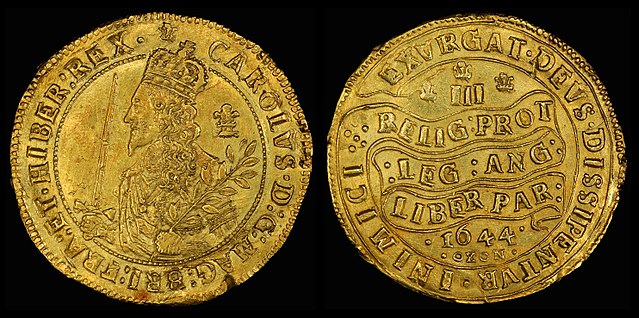Prince Rupert of the Rhine
Prince Rupert of the Rhine, Duke of Cumberland, was an English-German army officer, admiral, scientist, and colonial governor. He first rose to prominence as a Royalist cavalry commander during the English Civil War. Rupert was the third son of the German Prince Frederick V of the Palatinate and Elizabeth, eldest daughter of King James VI and I of England and Scotland.
Portrait by Peter Lely, 1667–1671
Rupert (right) with his elder brother, Charles I Louis, Elector Palatine (left), in a 1637 portrait by Anthony van Dyck
Rupert as a young man visiting the court of his uncle, King Charles I of England, by Anthony van Dyck
Charles I (in blue sash) holding a council of war at Edgecote on the day before the Battle of Edgehill. Rupert, seated, commanded the King's cavalry.
The term "Cavalier" was first used by Roundheads as a term of abuse for the wealthier royalist supporters of King Charles I and his son Charles II of England during the English Civil War, the Interregnum, and the Restoration. It was later adopted by the Royalists themselves. Although it referred originally to political and social attitudes and behaviour, of which clothing was a very small part, it has subsequently become strongly identified with the fashionable clothing of the court at the time. Prince Rupert, commander of much of Charles I's cavalry, is often considered to be an archetypal Cavalier.
Prince Rupert of the Rhine, often considered to be an archetypal Cavalier
Lord John Stuart and his Brother, Lord Bernard Stuart, c. 1638, by Sir Anthony van Dyck. Both Lord John Stewart and Lord Bernard Stewart died in the English Civil War, fighting on the Royalist side.
Triple Unite gold coin of 1644: the Latin legend translates as "The religion of the Protestants, the laws of England and the liberty of Parliament. Let God arise and His enemies be scattered."
Charles I in Three Positions, the triple portrait of Charles I by Anthony van Dyck







